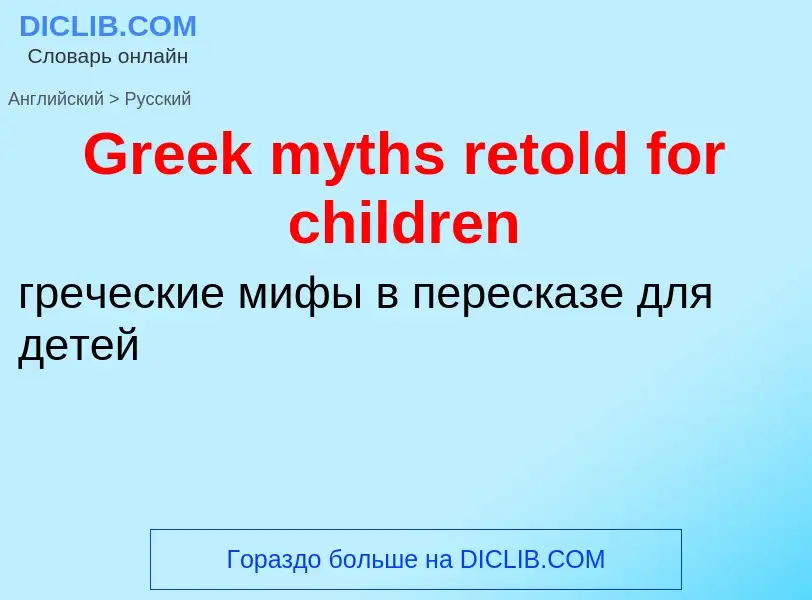Translation and analysis of words by ChatGPT artificial intelligence
On this page you can get a detailed analysis of a word or phrase, produced by the best artificial intelligence technology to date:
- how the word is used
- frequency of use
- it is used more often in oral or written speech
- word translation options
- usage examples (several phrases with translation)
- etymology
Greek myths retold for children - translation to russian
общая лексика
греческая буква
Definition
Wikipedia
For the Children is a British television programme targeted at children of school age. First broadcast on the BBC Television Service in 1937 at 3pm as the opening programme for afternoon viewing (as television would generally be broadcast from 3pm to 4pm and then later, from 9pm to 10pm). For its first two years the series was ten minutes in length. Suspended in 1939 along with the rest of BBC Television for the duration of World War II, it returned on 9 June 1946, running on Sunday afternoons and expanded to twenty minutes in length.
The series featured a variety of different presenters and acts: story readings, puppet shows, songs. On Saturday 13 March 1937, George Queen's Pantomime Goose was shown in the For the Children slot, the opening programme before In Your Garden came on at 3:10pm. In October 1946 the "hugely popular" children's puppet Muffin the Mule made his television debut on the show, accompanied by his "friend" Annette Mills. The puppet's character was devised by the puppeteer Ann Hogarth.
For the Children was last broadcast in December 1952, when it was suspended by other BBC children's television programmes, including Watch with Mother.

![A 16th-century edition of the New Testament ([[Gospel of John]]), printed in a renaissance typeface by [[Claude Garamond]] A 16th-century edition of the New Testament ([[Gospel of John]]), printed in a renaissance typeface by [[Claude Garamond]]](https://commons.wikimedia.org/wiki/Special:FilePath/Gospel Estienne 1550.jpg?width=200)
![Early Greek alphabet on pottery in the [[National Archaeological Museum of Athens]] Early Greek alphabet on pottery in the [[National Archaeological Museum of Athens]]](https://commons.wikimedia.org/wiki/Special:FilePath/NAMA Alphabet grec.jpg?width=200)

![A page from the [[Codex Argenteus]], a 6th-century Bible manuscript in Gothic A page from the [[Codex Argenteus]], a 6th-century Bible manuscript in Gothic](https://commons.wikimedia.org/wiki/Special:FilePath/Wulfila bibel.jpg?width=200)

